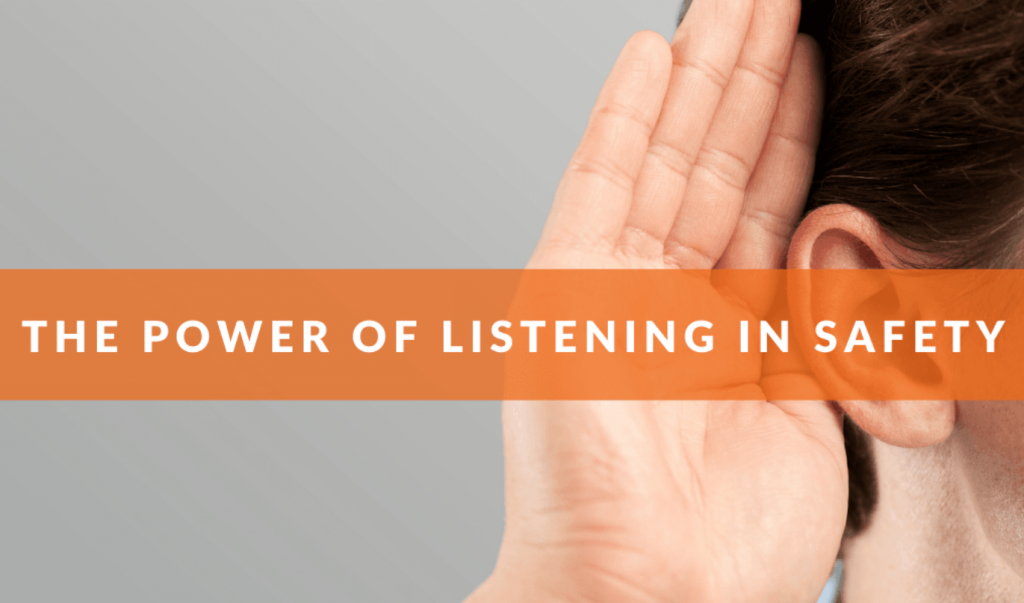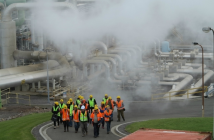Many safety managers tend to heavily focus on getting safety protocols, training, and equipment in place, but none of that is effective without employee adherence

The cold, hard truth is that PPE that isn’t worn does nothing; training that isn’t paid attention to helps no one; and protocols that are not followed have weak results. With all that in mind, it is easy to see how important it is to create an environment where worker engagement is a top priority. One very effective way of accomplishing this is by listening.
Listening = Increased Engagement
Unfortunately, workers and employees don’t often take active roles in workplace safety largely because they don’t feel that their input is valued. When workplace safety managers and leaders only invoke one-way communication (by talking and telling but never asking and listening), it can create an environment of disengagement.
According to a Business News Daily article that speaks to this very subject, “The best way to make your employees feel important and valued is to listen to them.” When leadership is open to hearing concerns and suggestions, it creates a culture of engagement and buy-in. In turn, as workers begin viewing themselves as an active part of the safety solution, they tend to become champions for the implementation of it.
Listening = Clearer Insights
There is no substitute for experience, and this is especially true when it comes to workplace safety. Whether you are building a training program or creating a safety equipment list, listening to worker input can help you gain valuable insights and fill gaps that might have been otherwise missed. Workers tend to understand better than anyone else where near misses happen because they are actively using the tools and machinery on a regular basis.
By taking the time to listen to their thoughts and comments, it is possible to identify areas of distraction, fatigue, and overall safety concerns. Then address them accordingly. As gaps are filled, worker stress is reduced, engagement is developed, and safety is achieved.
Listening = Better Reporting
If an employee doesn’t believe that their voice matters to management, they may shy away from using that voice to mention possible hazards, discuss questionable activities, or even report safety incidents. This can lead to underreporting, especially for near misses and minor accidents that don’t require any major medical attention.
Conversely, workers who are well-trained, engaged in the safety of the company, and who have grown accustomed to being listened to by their safety manager will be much more likely to speak up when they see something amiss.
By developing a culture that includes listening, safety managers can increase their overall reporting accuracy and even be alerted to potential hazards in time to keep them from becoming a reported incident.
Listening = Healthier Teams
Teamwork is an important part of preventing accidents and promoting safety. When people work together and view themselves as a cohesive unit, they tend to watch out for and protect one another more diligently. Listening is a vital part of building healthy workplace relationships and promoting teamwork.
When managers actively take steps to become effective listeners, it fosters conversation and moves workers into a position where they feel more like a confident team player and less like a passive bystander. Listening allows a healthy outlet for a team’s struggles to be heard, their ideas and feedback to be acknowledged, and their victories to be celebrated.
As teams become stronger over time, the result is a culture that genuinely cares about the health and safety of one another.
A Powerful Tool
Safety in the workplace is a complex subject that requires a multi-faceted approach in order to be successful. By incorporating listening into an existing program, it has the potential to:
- Create opportunities for shared learning and community involvement
- Reduce the number of false assumptions and miscommunications
- Encourage accurate incident reporting and accident dialogue
- Promote engagement, as well as candor, openness, and empathy
- Build workplace relationships and strengthen teams
While listening alone won’t solve every problem or prevent every accident from happening, it is a powerful tool that should be utilized as part of an overall safety program.






